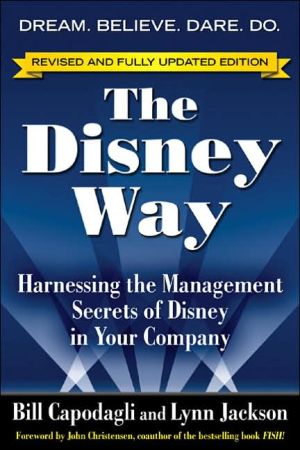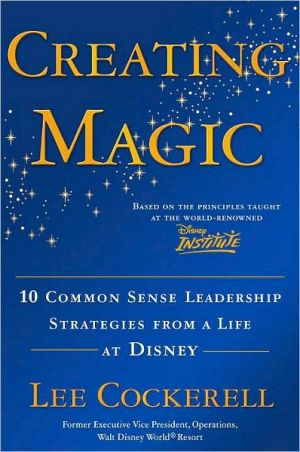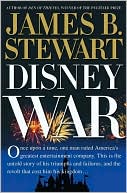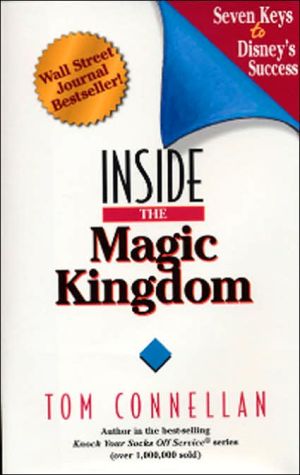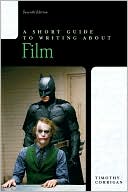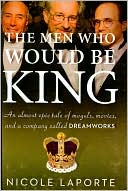The Disney Way: Harnessing the Management Secrets of Disney in Your Company
“So useful you may whistle while you work”- Fortune\ The original edition of The Disney Way was awarded a coveted “Best Business Book of the Year” by Fortune magazine. The world's foremost experts on Disney, Bill Capodagli and Lynn Jackson revealed Walt's secret success formula that propelled his company into the highest echelon of business, creativity, innovation, and success.\ Now this fully revised edition profiles a new set of diverse organizations-from The Cheesecake Factory, Ernst and...
Search in google:
As we see it, the true secret of the Disney organization is a four-tiered philosophy that Walt Disney embraced 75 years ago: Dream, Believe, Dare, Do. It has been said that Walt was once asked what made him successful. He responded that before he began any venture, he dreamed of things that hadn't been attempted before, he examined his beliefs and values to see if an idea had merit, he dared to turn his idea into reality, and finally, he developed a plan to make it all happen. We have positioned Disney as a benchmark to a variety of companies who have made the Disney magic work for them! —The Authors
The Disney Way\ Harnessing the Management Secrets of Disney in Your Company \ \ By Bill Capodagli Lynn Jackson \ McGraw-Hill\ Copyright © 2007 Center for Quality Leadership, D.B.A. Capodagli Jackson Consulting\ All right reserved.\ ISBN: 978-0-07-176681-4 \ \ \ Chapter One\ Walt's Way \ My only hope is that we never lose sight of one thing ... that it all started with a mouse. Walt Disney, 1954\ When a young Midwestern artist was struggling to get his first film-making business off the ground in 1923, he borrowed $500 from an uncle. The uncle insisted on repayment in cash rather than taking an ownership interest in the venture. That young artist, Walter Elias Disney, went on to advance the demanding art of animation to new heights and founded a company based on such sound business principles that it has survived for over three-quarters of a century and has influenced virtually every aspect of American culture.\ Hindsight, of course, has a well-deserved reputation for startling clarity, and we don't know if the uncle lived long enough to feel a full measure of regret. But had he opted for stock in The Walt Disney Company instead of a cash repayment, the return on his $500 would have amounted to almost a billion dollars from 1923 to the present.\ How did a boy born into rather modest circumstances in turn-of-the-century Chicago accomplish so much? Legend has it that Walt Disney explained his success this way:\ I dream, I test my dreams against my beliefs, I dare to take risks, and I execute my vision to make those dreams come true.\ Dream, Believe, Dare, Do: These words reverberate across the decades of Disney achievement. Everything Walt did—every choice he made, every strategy he pursued—evolved from these four principles. And as the bedrock upon which his life and work rested, they naturally informed the basic values that dictated how he ran his company. Thus, the ways in which The Walt Disney Company trained and empowered its employees, managed creativity and innovation, and provided service to its customers were all influenced by this four-pillared philosophy.\ Why Disney?\ The more we learn about this legendary figure and his achievements, both as an artist and as a creative business leader, the more certain it becomes that the Disney story embodies valuable lessons for every company. But most of us were originally drawn to Walt Disney and the company he founded the same way one is drawn to a favorite uncle.\ Like nearly everyone else alive today, we, the authors, grew up being almost as familiar with the Disney name as we were with our own. Many childhood hours were spent sitting on the floor before the TV set watching "The Wonderful World of Disney" and being transported to the Magic Kingdom.\ Neither one of us has forgotten the thrill of seeing Peter Pan for the first time. As a young father introducing my own children to the film, I [Bill] marveled at its ability to rekindle the emotions I had initially felt as a six-year-old. Disneyland, too, had much the same effect the first time I visited some 35 years ago. Not surprisingly, my then three-year-old son didn't want to leave and, I might add, I felt a little bit that way myself.\ In this instance, though, I was captivated by much more than the fabulous attractions. Viewing the park through the eyes of an industrial engineer, I was thoroughly intrigued by the processes. How did the Disney people manage all those crowds? How did they train their employees? How did they run their customer service? What was the secret of the success of their complex technology? I came away from that first visit deeply impressed by the organization—and with a lot of questions.\ As for me [Lynn], "The Wonderful World of Disney" was one of the best things about being a child. Later, when I became heavily involved in the field of training and development, I realized the true magic of Disney's philosophy. For me, the seed for benchmarking Disney was planted when I took a copy of Service America with me on a trip to Florida in the mid-1980s. I knew it would help prepare me to conduct an upcoming seminar for a group of salespeople from all over the country. Reading Albrecht and Zemke's book, I had one of those experiences when a light goes on in your head: Walt Disney insisted that every employee is the company in the mind of the customer. From that point on, my goal in training salespeople was to inspire them to begin living that mindset. Then, on my next trip to Walt Disney World, I closely observed the best of the best in action doing just that.\ Years later, when we started looking around for companies that could serve as examples in our consulting business, we found ourselves coming back again and again to Disney. A great deal of scrutinizing, analyzing, and researching of various companies led us to conclude that none compared to Disney in every aspect of running an organization. Whereas one company might excel in customer relations or another might work well with its suppliers, Disney's consistency in direction and overall strategy, its unrivaled customer service, its employee training and relatively low turnover, its product creativity, and its spectacular profitability combined, in our view, to make it the perfect business model.\ Having studied the Disney phenomenon for several decades, we are convinced that the management techniques we call "Walt's way" are as valid today as they were in 1937, when the classic Snow White and the Seven Dwarfs, the very first animated feature film, captured the hearts of moviegoers. Skeptics need only look to the spectacular successes The Walt Disney Company continues to achieve year after year, decade after decade, for affirmation of Walt's way.\ And if you're wondering whether the Disney magic has legs, we can answer with a resounding yes! Over the years, we have encouraged clients in many different industries to use Walt's fundamental credo to improve their customer service, productivity, and internal operations, while at the same time creating an atmosphere of fun. The company that Disney founded has, in effect, served as a laboratory for us and, in turn, our clients.\ This chapter introduces the 10 concepts at the heart of the Disney legend. Subsequent chapters then take up these principles in detail and show how they are still being lived at the company today and how some of our clients have adapted them to fit their specific circumstances, enabling them to create winning solutions. Their success stories attest to the continuing power of Walt's way.\ Benchmarking a Legend\ Like many other young men of his time and place, Walt Disney held a succession of jobs punctuated by stints of formal education. His skill as an artist and his interest in cartoons took him to California in 1923, and only four years later he formed Walt Disney Productions. Disney's first big success came the following year, in 1928, when he introduced the character of Mickey Mouse in the synchronized sound cartoon Steamboat Willie. The cartoon and the mouse were an instant hit.\ By the 1930s, this endearing little scamp had captured the hearts of audiences worldwide. Known as Michael Maus in Germany, Miki Kuchi in Japan, and Miguel Ratonocito in Spain, he even had a car named after him! When Fiat, the Italian automobile company, produced its first small car shortly after World War II, it was christened Topolino, Mickey's Italian nickname. Even though Mickey became a senior citizen a few years back, his ageless persona continues to be recognized and loved by young and old on every continent.\ Mickey may have led the parade, but Disney was not a one-mouse band by a long shot. No other company in the notoriously chancy entertainment business has ever achieved the stability, phenomenal growth, and multidirectional expansion of Disney.\ In spite of its ever-increasing reach, however, The Walt Disney Company has consistently kept to the central course described by its founder at the outset: to provide the finest in family entertainment. Firmly grounded in Walt's innate sense of principle and his Midwestern values, this mission has, over the years, become clearly associated with the Disney brand. Audiences expect it, and they are seldom disappointed.\ Whatever form the entertainment might take—a theme park ride, a Broadway musical, an Ice Capades production—it has to be a good show in every regard. When Walt talked about delivering "the good show," he didn't mean simply a glittering spectacle relying on superficial bells and whistles. He meant an entirely original, perfectly executed production with substance—one created to delight a wide audience. He believed that this was what customers wanted and expected from him, and he was fanatical about providing it.\ What's more, the concept of a good show encompasses far more than the on-stage action in a single production. Because Disney insisted that customers be treated like guests, great customer service has become a standard feature of the total package The Walt Disney Company offers. And wrapped up in that package is a gift of creativity—in product, service, and process—that makes even jaded adults smile with childlike delight.\ Accomplishing such magic obviously requires the contributions and assistance of a talented, dedicated, and loyal staff as well as an army of suppliers and other partners. Extensive training, constant reinforcement of the Disney culture and its values, and recognition of the valuable contributions that employees and partners make combine to keep people turning out one fantastic show after another as they strive to meet the exacting standards Walt established.\ It is this consistency of direction, obsession with customer service, commitment to people, and creative excellence that make The Walt Disney Company a standard by which others might be judged and an exemplary enterprise from which others can learn.\ A Consummate Dreamer\ Walt Disney was so successful as a businessman that people are often startled to learn that he was a lifelong dreamer who started out as a commercial artist. But it was precisely his unfettered imagination, coupled with a bent for experimentation that propelled him to the pinnacle of success. Far from being a hindrance, dreaming was the wellspring of Disney's creativity.\ The story is told that, as a schoolboy in art class, Walt was assigned to draw flowers. In what might now be seen as a quintessential touch, and, indeed, the precursor to many of Disney's animated characters, young Walt embellished his work by sketching a face in the center of each flower. His teacher was less than impressed by the boy's deviation from the norm, and, lacking a mirror like the one the wicked queen had in Snow White, failed to recognize the creative genius whose dream world would make him one of the most famous artists in history.\ Perhaps because he himself was the greatest of dreamers, Walt encouraged both his artisans and his hundreds of other employees to unleash their imaginations too. He knew that a reservoir of creative power often languishes within a company's ranks simply because no one ever bothers to tap it. Rather than hire someone for one specific purpose and forever pigeonhole that person—as is the norm at too many companies—Disney not only welcomed ideas from all of his employees, he actively sought to turn them into reality.\ From dreams spring ideas, and from ideas comes innovation, the lifeblood of any company. Walt Disney instinctively knew, however, that an unshakable belief—in one's principles, in one's associates and employees, and in customers—is necessary before ideas can successfully evolve into innovation.\ No matter how ingenious an idea was, no matter what kind of financial interests were at stake, Disney demanded that the company adhere to his belief in and commitment to honesty, reliability, loyalty, and respect for people as individuals. Whether he was producing a cartoon or building an amusement park, he refused to palm off a shoddy product on his audience.\ When Pinocchio was released in February 1940, the New York Times hailed it as "the best cartoon ever made." But Pinocchio had a difficult birth. The story of the puppet-maker Geppetto and his "son" Pinocchio, the all-but-human puppet he created, was six months into production, and the team of animation artists was almost halfway through its meticulous, time-consuming drawings for the full-length feature when Walt Disney called a halt. Pinocchio was altogether too wooden, he said, and the character proposed for Jiminy Cricket made him look too much like, well, a cricket. Never mind that $500,000 had already been spent, Disney was not deterred. Previous efforts were tossed aside, and Disney called Ward Kimball, one of his talented young animators, into his office.\ Kimball, who was upset because his labors on Snow White had ended up on the cutting-room floor, was planning to use the occasion to resign when Disney summoned him. But the animator never had a chance. He got so excited listening to Disney talk about his dreams for the film and his ideas about Jiminy Cricket that Kimball entirely forgot his own intentions of resigning. Instead, he stayed at the company and went on to create a cricket that was more human than insect, one that embodied the spirit of hope that children of all ages possess but which sometimes needs reinforcing.\ The decision to halt the production of Pinocchio was made because the movie was failing to live up to one of Walt Disney's principles, his insistence on excellence. At the time, Disney already had won worldwide acclaim. He probably could have let the film go as it was without doing any serious damage to his company or his reputation—and with substantial savings. But Disney recognized the difference between adequate and excellent, and he would not compromise.\ That's not to say that Disney was a spendthrift. Quite the contrary: He was always acutely aware of the bottom line; he simply refused to let it dictate every decision he made. "Why should we let a few dollars jeopardize our chances?" Walt once wrote to his brother Roy. Before it was finished, Pinocchio cost $3 million, more than any other animated picture up to that point. Although high-priced for its day, this film classic long ago paid for itself in the degree of sophisticated animation, craft, and artwork it achieves.\ Disney's strength as an imaginative and principled creative force grew from his willingness to take risks, to experiment, and to invest his resources and his time in new ventures. From the beginning, he searched for innovative ways to give his audiences the best of all possible entertainment fare. He pioneered a new art form in making Snow White, and he did it in the face of nearly unanimous ridicule.\ "No one will sit through a 90-minute cartoon," people told him. But Disney ignored the naysayers and clung tenaciously to his dream, confident that he could produce a film that would appeal to both adults and children. His willingness to buck accepted wisdom and take a risk paid handsome dividends: Snow White and the Seven Dwarfs, which was released in 1937, grossed $8 million, an astonishing amount when you consider that at the time movie tickets cost only pennies. It received a special Academy Award, and some consider it to be one of the greatest films ever made. Snow White has been equally popular in reissue, with a box office take that places it in the top 50 all-time highest-grossing films.\ In just a dozen years, roughly 1930 to 1942, Walt Disney managed to transform animation from a marginal segment of the entertainment industry to a new art form. He used technical innovations to create a seamless mixture of story, color, and sound. Knowing that great visions require great, but calculated, risks, Disney dared to follow his instincts.\ Turning Dreams into Reality\ Walt Disney's stellar accomplishments might suggest that he had no difficulty in taking whatever action was needed to bring his dreams to fulfillment. It was not always easy, however, particularly when a lot of skeptics stood in the way. But Disney knew that dreams are sterile things unless the dreamer can do what it takes to make them come true.\ When his fertile mind produced an idea, he set about transforming that idea into a concrete product, service, or process. If his methods of executing his vision were sometimes unconventional or broke the accepted rules, so be it. The point was to put on the good show.\ For example, when Disneyland was being built in the early 1950s, Walt himself was often on site checking every detail. He spent countless hours with the creative and knowledgeable staff he had hired, putting his personal stamp on everything from landscape design to attractions to music.\ But then he did something rather unusual: He asked everyone who was working on Disneyland, from electricians to executives, to test each ride as it was completed. There was nothing new about Disney's reaching for perfection, but the park was on a tight schedule with opening day near at hand, and this idea clearly seemed to be a waste of time and money. Imagine asking your janitors, elevator operators, or other low-level employees for critical input about a new product or service just before you're ready to launch it. Disney's request was a bit farfetched. Or was it?\ (Continues...)\ \ \ \ \ Excerpted from The Disney Way by Bill Capodagli Lynn Jackson Copyright © 2007 by Center for Quality Leadership, D.B.A. Capodagli Jackson Consulting. Excerpted by permission of McGraw-Hill. All rights reserved. No part of this excerpt may be reproduced or reprinted without permission in writing from the publisher.\ Excerpts are provided by Dial-A-Book Inc. solely for the personal use of visitors to this web site. \ \
ForewordixPreface to The Paperback EditionxiPrefacexiiiAcknowledgmentsxv1.Walt's Way1Dream2.Make Everyone's Dreams Come True15Believe3.You Better Believe it334.Never a Customer, Always a Guest595.All for One and One for All796.Share the Spotlight101Dare7.Dare to Dare117Do8.Practice, Practice, Practice1319.Make Your Elephant Fly--Plan14910.Capture the Magic with Storyboards16511.Give Details Top Billing181Epilogue. the Magic Continues193Notes205Bibliography209Index213
